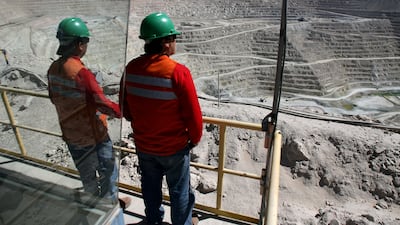The dark side of ESG investing has the potential to undermine a whole generation of clean tech strategies.
Adam Matthews, chief responsible investment officer at the Church of England Pensions Board, said the risks posed to the renewables boom via the mining industry are not getting nearly enough attention.
He said that portfolios intended to uphold environmental, social or good governance principles may end up being exposed to human rights abuses and environmental damage via supply chains.
It is an issue that led Mr Matthews and other investors to recently form an alliance, with a view to shining the spotlight on the topic to make it much harder for fund managers to plead ignorance.
The Global Investor Commission on Mining 2030, which is being advised by the UN, plans to expose and fight what it calls the systemic risks that stem from the link between mining and the clean energy industry.
“The auto sector is massively exposed, as are wind turbine manufacturers,” Mr Matthews said in an interview. There is also “huge demand” for minerals such as copper and lithium, which are “enormously important to low-carbon technology.
But “we should be under no illusion” regarding the fact that such minerals and metals often come from areas in which “unstable government structures” are the norm, and where the dynamics around mining “play a role in conflict”, he said.
The renewables boom that is now under way risks “inflaming and exacerbating” such instability, he added.
The building blocks needed to expand wind, solar and electric vehicle production will require considerably more minerals and metals than combustion-powered technology.
The World Bank estimates that by midcentury, the amount of raw materials necessary for the green transition will soar by 500 per cent. And with new legislation such as the US Inflation Reduction Act turbocharging demand for clean tech, that pressure is set to soar.
“We have some companies that are good practitioners, but that’s not representative of the whole sector,” Mr Matthews said, declining to single out individual firms.
Analysts at BloombergNEF estimate that the path to net zero may require digging up 5.2 billion metric tonnes of metals through 2050, which may be worth as much as $10 trillion.
Some companies are trying to reduce their exposure to risks by either looking for ways around raw materials, or taking direct control of supply lines.
Tesla is redesigning batteries to avoid cobalt and nickel. General Motors recently invested $650 million in Lithium Americas Corp, which is developing a mine in Nevada.
Manufacturers in the renewables industry and their investors already face a stricter regulatory environment in some key jurisdictions. The EU has made clear it does not want to fall victim to the same dependency on the suppliers of raw materials such as lithium as it suffered with oil and gas.
In September, the bloc unveiled the Critical Raw Materials Act, with the explicit aim of securing “sustainable access” to the minerals and metals needed to achieve climate neutrality.
The EU’s Corporate Sustainability Due Diligence Directive is another avenue through which the bloc plans to ensure companies screen their supply chains for ESG risks.
Such initiatives follow shocking evidence of human suffering as a result of mining. Last year, testimony gathered by non-profit Human Rights Watch described the prevalence of child labour in the mining industry of the Democratic Republic of Congo, which sits on about 70 per cent of the world’s cobalt. Most of that is produced at industrial projects controlled by multinational companies including Glencore Plc and CMOC Group.
Indonesia, which produces roughly half the world’s nickel, recently claimed it had overtaken Russia and Australia to become the planet’s second-biggest source of cobalt.
In South America, meanwhile, mining has had a devastating impact on local populations.
In 2019, a mining waste dam at a Vale SA iron-ore mine in the town of Brumadinho, Brazil, collapsed, killing 270 people. Vale subsequently agreed to pay $7 billion to the state of Minas Gerais, which will be used in socioeconomic and environmental programmes to repair the damage caused by the dam collapse.
Mr Matthews said miners clearly play an essential role in the transition to a more sustainable economy, so excluding them from portfolios is not tenable for ESG investors.
Sometimes, however, there is no choice, and the Church of England Pensions Board exited its entire Vale stake as the full horror of the 2019 dam collapse became clear and spearheaded a campaign to improve mine safety.
The goal is to expose and isolate the bad actors, and apply much higher standards of accountability as mining’s vital role in the green transition grows.
While “we need mining”, the process of extracting raw materials for the renewables revolution cannot be “a mad scramble to meet the demands where there’s no consultation with the community”, Mr Matthews said. Otherwise the industry will “lose the social licence” to continue its work.

